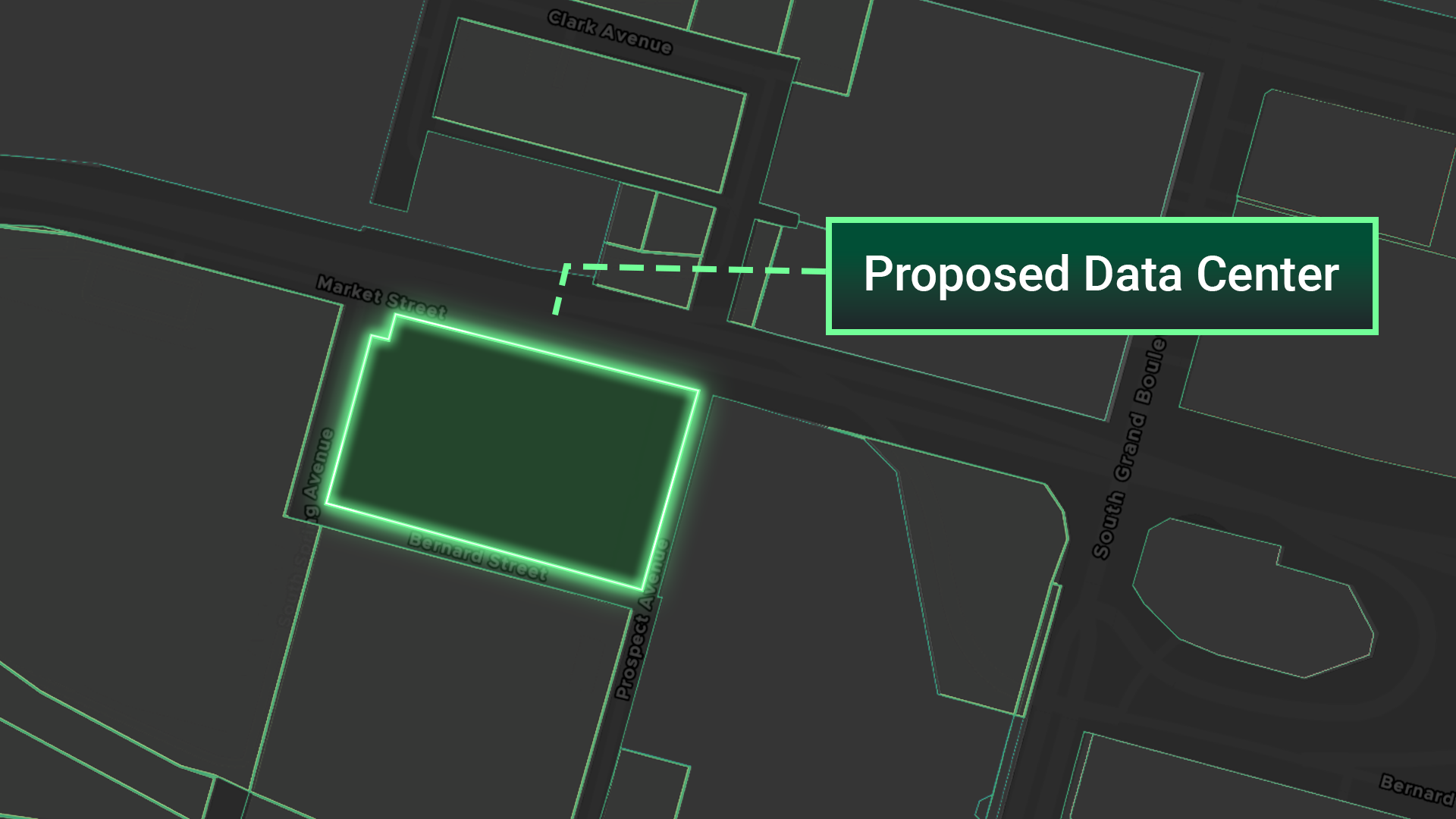In St. Louis, Missouri, data center development has prompted concerns over environmental impact, energy demand, and land use priorities. In response, the city enacted new zoning rules to ensure greater public input, transparency, and sustainable planning.
Acres.com helps cut through the development complexity by offering instant visibility into zoning, future land use, infrastructure, and regulatory constraints. As policies tighten and community expectations rise, complete land intelligence is becoming essential for site selection, permitting, and long-term project success.
St. Louis Armory Data Center Controversy: Project Details and Power Concerns
The public concern is centered on a proposed $1.5 billion data center at the Armory site in Midtown St. Louis. Here's what's at stake:
- Project scale: $600M in new construction + $700M in equipment.
- Build time: 3 years.
- Projected revenue: $304M over 10 years.
- Power strain: Ameren, the region’s largest utility provider, warned that new power plants may be needed to meet the demand.
- Cost risks: Missouri’s Public Service Commission flagged potential cost shifts to other customers.
Factors Behind St. Louis' Data Center Policies
The controversy has sparked broader community issues with data center development:
- Massive electricity needs: On par with tens of thousands of homes.
- High water usage: Potentially stressing municipal systems.
- Limited public oversight under current zoning laws.
These challenges reflect growing public scrutiny of tech infrastructure—like in St. Charles, where public opposition led to a postponement of new facilities.
St. Louis Mayor's Executive Order No. 92: New Data Center Requirements
In response, Mayor Cara Spencer signed Executive Order No. 92, which puts new requirements in place.
- Secure a conditional use permit or prove it poses no public safety risk.
- Hold a public hearing to gather community input.
- Provide detailed reports on energy, water usage, and potential utility impacts.
- Follow a new regulatory framework, currently being developed for zoning and water codes.
Data Center Regulations: How Other U.S. Cities Are Responding to Public Backlash
St. Louis isn’t alone in rethinking how data centers fit into the urban landscape. Across the country, local governments are stepping up with new policies to manage growth, protect resources, and ensure community input. Here are a few examples:
- Aurora, Illinois: Approved a moratorium on new data centers so the city can craft stricter rules around noise, energy use, and environmental impacts.
- Phoenix and Mesa, Arizona: Created zoning amendments to regulate data center construction, aesthetics, noise, and infrastructure.
- Loudoun County, Virginia: Adopted zoning changes and required data center proposals to have public hearings and stricter oversight.
Using Acres to Navigate Zoning for Data Centers
Data center growth is triggering zoning reforms across U.S. cities.
- Local governments and communities are demanding deeper visibility into land use, utilities, and environmental impact.
- Developers must now navigate evolving rules, public scrutiny, and site-specific constraints.
- To mitigate risk, complete land intelligence is no longer optional.
Acres helps data center developers move with confidence:
- See zoning overlays, future land use, utility infrastructure, and parcel ownership—on one map.
- Spot ideal sites faster, avoid permitting surprises, and meet new regulatory requirements.
- Align with city goals from day one.
The Future of Tech Infrastructure: Balancing Growth and Community
St. Louis’ response to the Armory project reflects a broader national trend: cities are demanding smarter, more sustainable tech infrastructure.
For developers, that means transparency and complete land intelligence are no longer optional.
As land use, energy policy, and tech development increasingly intersect, staying informed is essential. Get the intel you need to evaluate markets, spot risks, and move with confidence with the Acres Data Center Index.
